During my growing-up years in Dallas, the name of Mildred “Babe” Didrikson was frequently written and spoken. Everybody, it seems, knew about this Norwegian-American athletic marvel. Born in Port Arthur, she moved with her family to Beaumont at age 4. Didrikson was an example of early 20th century southern white poverty—that is, poor but not poor like the black folks. She and her siblings often went barefoot 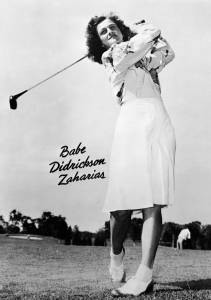 and wore rough clothing. She could run faster and play sports better than all of her female counterparts and most of the boys as well. Dropping out of Beaumont High School before graduation, Didrikson took a secretarial job at a Dallas insurance company, Employers Casualty, despite being unable to type.
and wore rough clothing. She could run faster and play sports better than all of her female counterparts and most of the boys as well. Dropping out of Beaumont High School before graduation, Didrikson took a secretarial job at a Dallas insurance company, Employers Casualty, despite being unable to type.
“Colonel” Melvin J. McCombs hired her to play on the company’s women’s basketball team. The Golden Cyclones, as they were called, prospered with Didrikson on the court. They reached the Amateur Athletic Union championship game thrice and won it in 1931. The team had problems that approached cat fights; Didrikson was far and away the best player, the boss favored her, and she had developed a cocky attitude. The company created a track and field program, so the Babe switched sports and was no less dominant. McCombs, seeing her rare talent and a 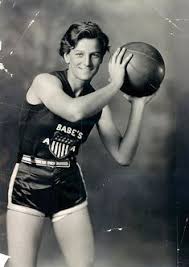 public relations opportunity, sent her as a one-woman track team to the 1932 AAU meet at Dyche Stadium in Evanston, Illinois. She competed in all 10 events, winning five of them and tying for first in another. The Employers Casualty “team” easily outpaced the others, and the media went nuts in trying to describe this phenomenal Texas athlete. Grantland Rice, in particular, boomed her shamelessly. He called Didrikson “an incredible human being. She is beyond all belief until you see her perform. Then you fully understand that you are looking at the most flawless section of muscle harmony, of complete mental and physical coordination the world has ever known.”
public relations opportunity, sent her as a one-woman track team to the 1932 AAU meet at Dyche Stadium in Evanston, Illinois. She competed in all 10 events, winning five of them and tying for first in another. The Employers Casualty “team” easily outpaced the others, and the media went nuts in trying to describe this phenomenal Texas athlete. Grantland Rice, in particular, boomed her shamelessly. He called Didrikson “an incredible human being. She is beyond all belief until you see her perform. Then you fully understand that you are looking at the most flawless section of muscle harmony, of complete mental and physical coordination the world has ever known.”
Didrikson made enemies at that track meet, just as she had as a basketball player and as she would in the years to come. She was somewhat crude, she smoked a pack of cigarettes a day, she boasted, she cursed, and she tried to intimidate both teammates and opponents. I must add some context by stating that women’s 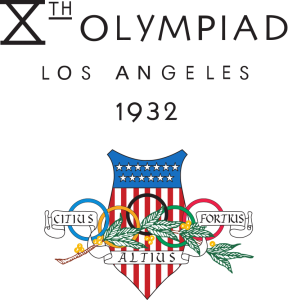 athletics 90 years ago was anything but deep. It would have been impossible for a man, no matter how talented, to blow through the field as she had done in Evanston. Then again, she deserves full credit for casting aside notions of what was proper for a female athlete. No powder-puff girl, she played to win.
athletics 90 years ago was anything but deep. It would have been impossible for a man, no matter how talented, to blow through the field as she had done in Evanston. Then again, she deserves full credit for casting aside notions of what was proper for a female athlete. No powder-puff girl, she played to win.
The 1932 Olympics was just the second in which women were allowed to take part. Didrikson rode a train to Los Angeles and made more history—gold in the 80-meter hurdles (world record), gold in the javelin and silver in the high jump (another world record). Running, throwing and jumping events are so fundamentally different that no modern-day athlete could excel at all three. Even then, it was hard for people to grasp what she had done.
I am especially struck by Didrikson’s success in the javelin. How did a woman who stood just 5′ 6″ and weighed 132 pounds have the strength to throw that darn spear 43.69 meters, then an Olympic record? (The current women’s Olympic record in the javelin, 71.53 meters [set in 2004], is held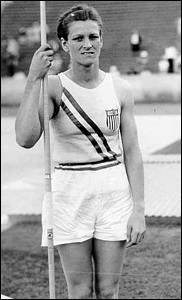 by Cuba’s Osleidys Menéndez, who stood 5′ 9″ and weighed 176 pounds. Menéndez, however, did not run the hurdles or high jump!)
by Cuba’s Osleidys Menéndez, who stood 5′ 9″ and weighed 176 pounds. Menéndez, however, did not run the hurdles or high jump!)
In the next few years, Didrikson searched for the best way to use her extraordinary athletic skills and make a living. Sometimes she had to go back to Dallas and the drudge work of shuffling papers for Employers Casualty. There were frequent troubles with the AAU and Olympic majordomo Avery Brundage over their pristine concepts of amateurism. Didrikson toyed with long-distance swimming, bowling, tennis, baseball and basketball. She even took part in some demeaning—albeit profitable—barnstorming and vaudeville shows as people never tired of seeing Babe Didrikson in the flesh.
She had played a few rounds of golf during her youth in Beaumont and finally focused on it. As is the case with the greats in any sport, talent blends with dedication. Didrikson took golf lessons (including some from Gene Sarazen) and entered a feverish period of mastering the game. She studied the rule book, hit a million balls, learned how to putt and use an iron and a sand wedge. Her work off the tee was especially impressive, routinely topping 250 yards. When asked the secret of her success, she had a ready answer: 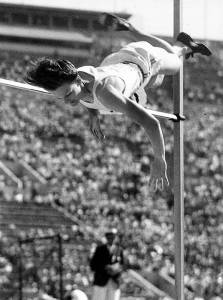 “I just loosen up my girdle and give it a whack.” Some people wanted the brash Babe to fail, but she disappointed them and rose to the occasion. Didrikson won, among many others, the women’s US and British Opens in 1946 and 1947, respectively. Those were, at the time, restricted to amateurs. She was the driving force in creation of the Ladies Pro Golf Association, patterned on the men’s PGA. Easily the most popular player with the gallery, she won and won—14 consecutive tournaments in one stretch; Didrikson, a shameless braggart who often overstated her achievements, claimed it was really 17.
“I just loosen up my girdle and give it a whack.” Some people wanted the brash Babe to fail, but she disappointed them and rose to the occasion. Didrikson won, among many others, the women’s US and British Opens in 1946 and 1947, respectively. Those were, at the time, restricted to amateurs. She was the driving force in creation of the Ladies Pro Golf Association, patterned on the men’s PGA. Easily the most popular player with the gallery, she won and won—14 consecutive tournaments in one stretch; Didrikson, a shameless braggart who often overstated her achievements, claimed it was really 17.
This larger-than-life figure used to walk into the clubhouse before an LPGA event and holler, “Hey girls, the Babe’s here! Who’s going to finish second?”
She married a former wrestler named George Zaharias in 1938. He was her supporter, manager, masseur and sometimes combatant. But he may have also been her “beard.” The Urban Dictionary defines the term as “any opposite-sex escort taken to an event in an effort to give a homosexual person the appearance of being heterosexual.” The lesbian “community” has certainly claimed Didrikson as one of their own, scoffing at the validity of her marriage to Zaharias and pointing to her relationship with a young golfer named Betty Dodd that went on for the final six years of her life. I remember being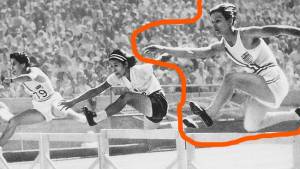 dismayed when I first heard about this, not wanting it to be true. Maybe yes, maybe no, but it seems that she did not have a boyfriend or sex partner before “jumping the broom” with Zaharias at age 26.
dismayed when I first heard about this, not wanting it to be true. Maybe yes, maybe no, but it seems that she did not have a boyfriend or sex partner before “jumping the broom” with Zaharias at age 26.
Some of her critics in the 1930s and 1940s were threatened by Didrikson, none more so than New York−based Paul Gallico. A prolific writer, he penned scorching, sarcastic and quite possibly libelous articles about her. Gallico urged Didrikson (whom he called a “muscle moll”) to pretty herself up and sit at home, waiting for gentleman callers.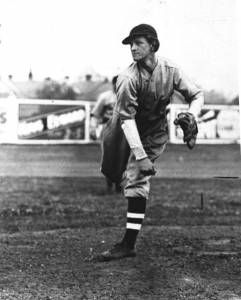
I am willing to contradict his assertion that Didrikson was ugly, homely or plain. It’s true that in her basketball and track days, she wore her hair short, but that alone does not constitute a lack of femininity. I have gazed at photos of her as a young athlete, and I see bright eyes, a lively face and a strong personality. Gallico and his ilk had narrow ideas about female beauty. I also refuse to acquiesce to the notion that a woman with slim hips, long legs, broad shoulders and nice muscle tone is repulsive or in any way unnatural. One of the main signs of social progress is that girls are no longer discouraged from being “tomboys.”
Constantly in the spotlight, Didrikson did evolve. A Fort Worth friend named Bertha Bowen painted her fingernails and taught her to wear stylish clothes and hats, and a little lipstick. On and off the links, she looked quite womanly.
Diagnosed with colon cancer in 1953, Didrikson had major surgery and resumed winning golf tournaments, and she did so while wearing a discreet colostomy bag. The disease came back, and she died at John Sealy Hospital in Galveston on September 27, 1956. President Dwight Eisenhower’s next press conference began with a statement of condolences about the passing of this woman who had blazed her way across sports pages and into the hearts of so many. Ben Hogan, a fellow Texan with whom she was sometimes compared, said, “They have quit making women like Babe…. She had more strength and stamina and desire than any other woman athlete.” Named by the Associated Press as the top female athlete of the first half of the 20th century and selected for numerous halls of fame, her legacy 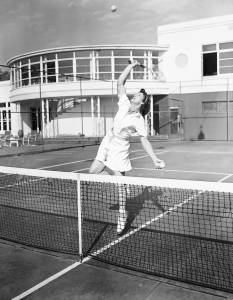 nevertheless gradually subsided. This is something I find perplexing, as she had a unique career. A star in basketball, track and field, and golf? Name another person of either gender who has done that. The closest might be Jackie Joyner-Kersee who played hoops at UCLA and won Olympic medals in the long jump and heptathlon (a jack-of-all-trades event) in Los Angeles, Seoul, Barcelona and Atlanta. Joyner-Kersee, to her credit, knew about the Babe and called her an inspiring example.
nevertheless gradually subsided. This is something I find perplexing, as she had a unique career. A star in basketball, track and field, and golf? Name another person of either gender who has done that. The closest might be Jackie Joyner-Kersee who played hoops at UCLA and won Olympic medals in the long jump and heptathlon (a jack-of-all-trades event) in Los Angeles, Seoul, Barcelona and Atlanta. Joyner-Kersee, to her credit, knew about the Babe and called her an inspiring example.
Didrikson shattered those long-held stereotypes of what women could or should be. She was a natural athlete who boldly forged her own identity at a time when most people would have preferred that she be quiet and demure, cheering for the boys. That was never her way.

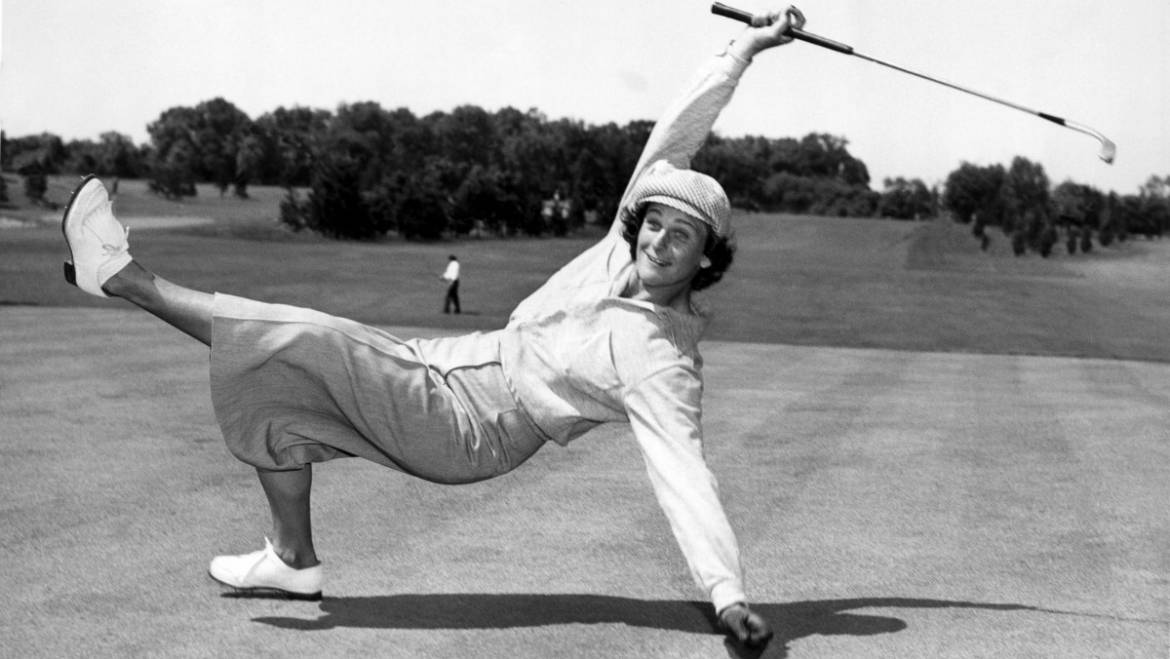
9 Comments
Nicely written, Richard. I remember seeing a movie about her (in the 70s, I believe). Susan Clark and Alex Karras had the starring roles and were actually married in real life. That’s the first time I learned of her “off the charts” achievements. Our first semester at BA, I had gym class and Nina Sparks was in charge. We were playing volleyball and I was routinely jumping up at the net and spiking the ball. I heard a comment (to no one in particular) from one of the girls on the sidelines waiting to rotate in, which was “how can she jump so high?” Ms. Sparks replied, “a rabbit can jump higher than an elephant.” Nice memories…
As indicated herein, it is a very good thing that girls are today encouraged–not discouraged–if they show some degree of athletic aptitude.
I remember her very well, we studied her in elementary school. She was an amazing athlete for her time, and if she specialized she would probably still be very good.
Kenny: That is something I meant to say in the story, how she did not specialize. Hoops, track and field (all those events) and golf. Yeah, the Babe was super-great.
Hi Richard-Thanks, very interesting article. What an incredible athlete. I’ve never heard of anyone excel and win at so many sports. Have you done a story on Joe Don Looney? He was a colorful athlete. He went to the same high school I did in Ft. Worth after leaving BA.
She sure was, Kevin. Looney has been covered so many times, and then there is the matter that he loaded up on steroids. That helped him get so big and strong and fast, plus it may have made him the wild man he was.
I really enjoyed reading about this lady. I had neve3r heard of her. Thanks for sharing this story.
A Texas guy who never heard of Babe…. Unfortunately, I think there are many more these days, Larry. As I mentioned, her legacy has faded in recent decades.
Richard- Enjoyed your interesting article about this versatile female athlete. I have probably seen a road sign on I-10 near Beaumont about a museum dedicated to her accomplishments. It is unfortunate that she predated the acceptance of women as athletes.
Add Comment